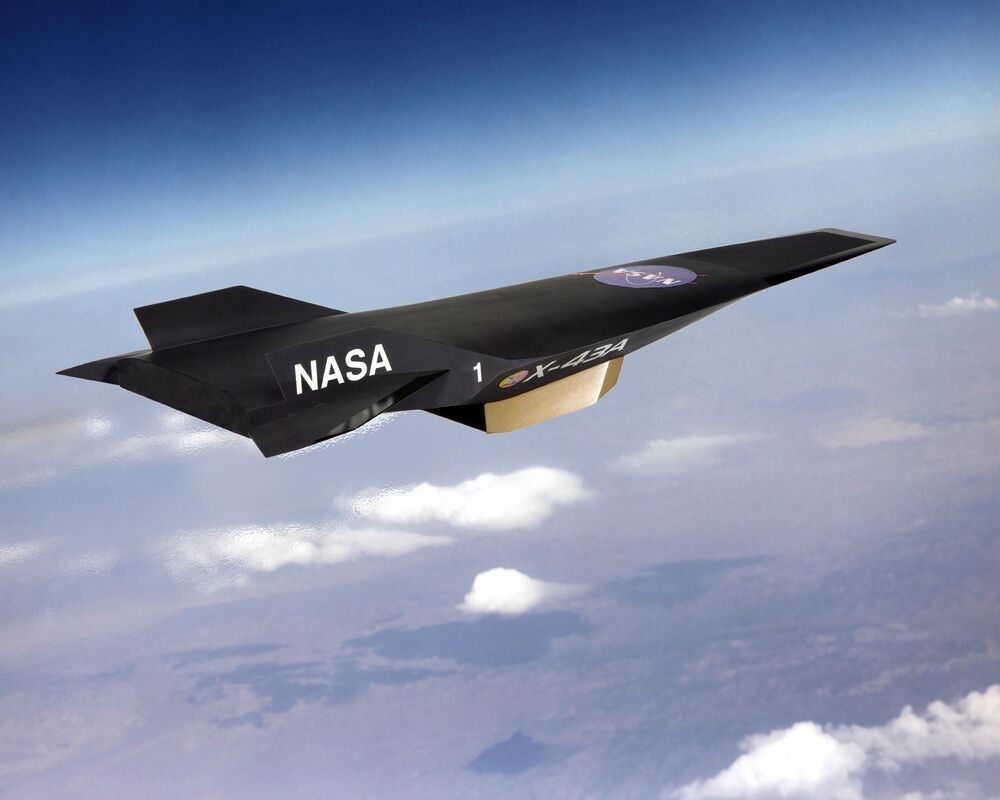Four decades of supersonic-combustion ramjet propulsion research culminated in a successful flight of the X-43A hypersonic technology demonstrator in March 2004, the first time a scramjet-powered aircraft had flown freely. After being launched by Dryden’s venerable B-52B mothership off the coast of Southern California, a modified first-stage Pegasus booster rocketed the X-43A to 95,000 feet before the X-43A separated and flew under its own scramjet power at an airspeed of Mach 6.8, or about 5,000 mph, for about 11 seconds. On Nov. 16, another identical scramjet-powered X-43A did it again, this time reaching hypersonic speeds above Mach 9.6, or about 6,800 mph, in the final flight of the X-43A project. Both flights set world airspeed records for an aircraft powered by an air-breathing engine, and proved that scramjet propulsion is a viable technology for powering future space-access vehicles and hypersonic aircraft.
